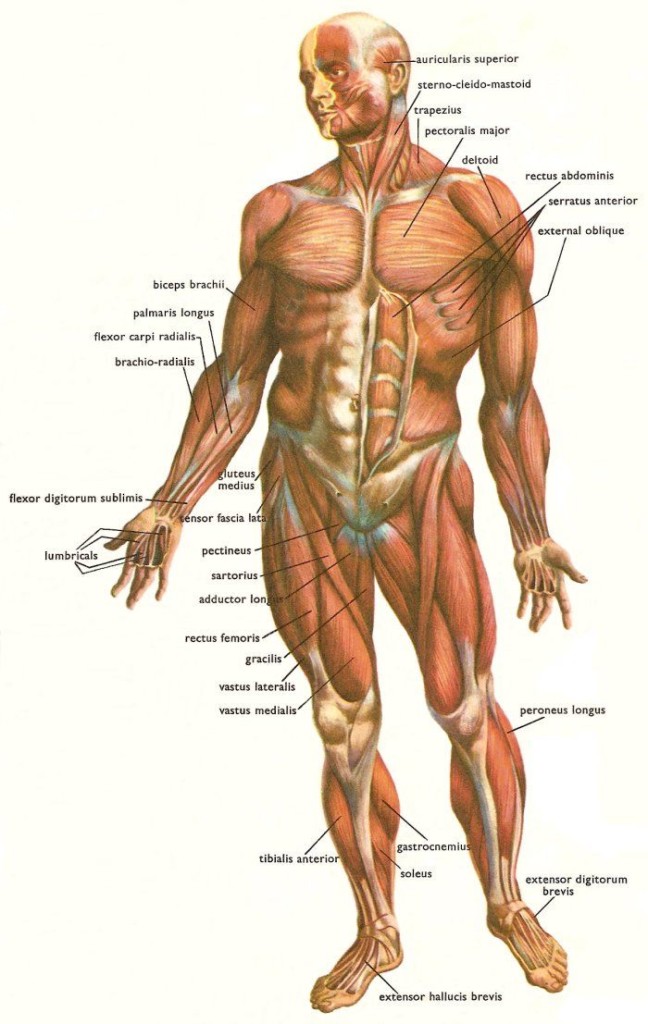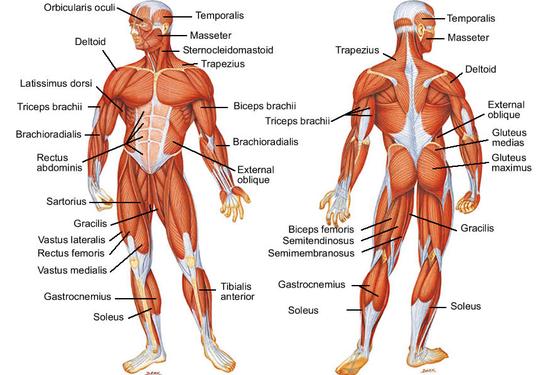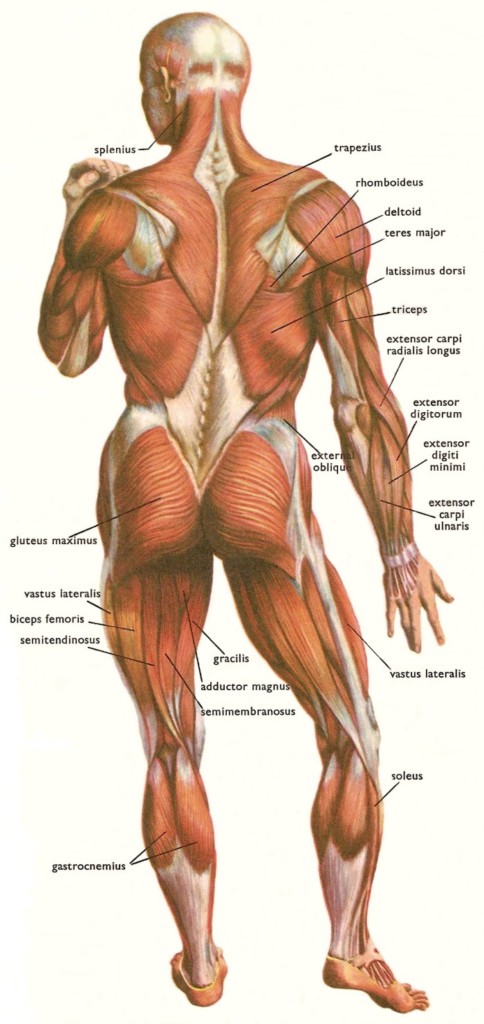The major muscles involved in movement are skeletal muscle. These muscles connect to bone and often go across joints, although some join bone to bone across large areas (e.g. abdominal muscles join the rib cage to the pelvis).
The major muscles involved in movement categorised by location are:
Major Muscles Involved in Movement – Anterior
Arm
- Deltoids
- Biceps brachii
- Brachio-radialis
- flexor-carpi-radialis
- Palmaris longus
Chest
- Pectoralis major
- Serratus anterior
- Intercostals
Abdomen
- Rectus abdominis
- External obliques
- Internal obliques (deep)
- Transverse abdominis (deep)
Legs
- Satorius
- Psoas
- Quadriceps (Rectus femoris, Vastus medialis, Vastus lateralis, Vastus intermedius
- Tibialis anterior
Major Muscles Involved in Movement -Posterior
Arms
- Deltoid
- Triceps
- Flexor-carpi-ulnaris
- Extensor-carpi-radialis longus
- Extensor digitorum
Back
- Trapezius
- Rhomboids
- Teres major
- Latissimus dorsi
- Erector spinae (deep)
Legs
- Gluteus Maximus
- Hamstrings (biceps femoris, semitendinosus, semimembranosus)
- Adductor magnus
- Gracilis
- Gastrocnemius
- Soleus
Major joint actions caused by the major muscles involved in movement.
Your syllabus requires you to know the major joint actions performed by the major muscles involved in movement. If you need to revise joint actions please click here. Otherwise, below you will find the major joint action caused by a concentric muscular contraction for each of the major muscles involved in movement below.
Arms
- Deltoid – abduction, medial rotation, and extension of the shoulder
- Triceps – extension of the elbow and shoulder
- Biceps brachii – flexion of the elbow and shoulder
- Brachio-radialis – flexion of the elbow
- Flexor-carpi-ulnaris – flexion and adduction of the hand
- flexor-carpi-radialis – flexion and abduction of the hand
- Extensor-carpi-radialis longus – extension and abduction of the hand
- Extensor digitorum – extension of the fingers (NOT thumb)
- Palmaris longus – flexion of the hand
Back
- Trapezius – elevation, adduction and depression of the scapula
- Rhomboids – retraction and elevation of the scapula
- Teres major – medial rotation and adduction of the shoulder
- Latissimus dorsi – adductions, extension and internal rotation of the shoulder
- Erector spinae (deep) – extension of the lower vertebral column
Chest
- Pectoralis major – medial rotations, adduction, and flexion of the shoulder
- Serratus anterior – abducts the scapula
- Intercostals – elevation and depression of the ribs
Abdomen
- Rectus abdominis – flexion of the vertebral column
- External obliques – flexion and rotation of the vertebral column
- Internal obliques (deep) – flexion and rotation of the vertebral column
- Transverse abdominis (deep) – compression of the abdomen
Legs
- Gluteus Maximus – extension and abduction of the hips
- Psoas – flexion of the hips
- Satorius – flexion and lateral rotation of the hips
- Quadriceps (Rectus femoris, Vastus medialis, Vastus lateralis, Vastus intermedius) – flexion of the hips or extension of the knee
- Hamstrings (biceps femoris, semitendinosus, semimembranosus) – extension of the hips or flexion of the knee
- Adductor magnus – adduction of the hips
- Gracilis – adduction, medial rotation and flexion of the hips
- Gastrocnemius – flexion of the knee and plantar flexion of the ankle
- Soles – plantar flexion of the foot
- Tibialis anterior – dorsiflexion of the foot
References


